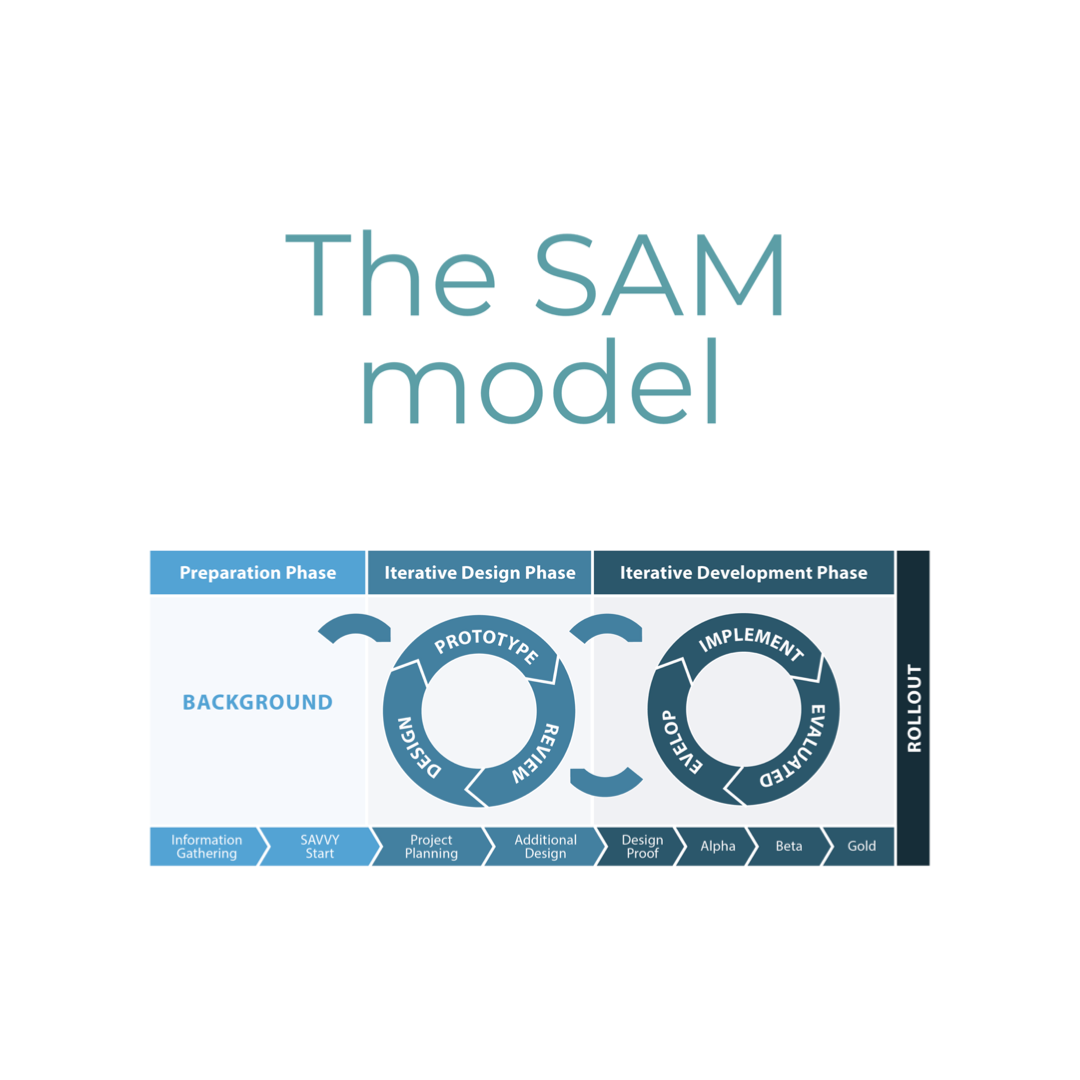The SAM (Successive Approximation Model) is an instructional design model that promotes an iterative and agile approach to the design and development of instructional materials. It was developed by Michael Allen, an influential figure in the field of instructional design. The SAM model is particularly well-suited for projects that require flexibility, collaboration, and rapid development.

Here’s a closer look at the SAM model’s key components:
Preparation: The preparation phase involves establishing the project’s overall goals, identifying the target audience, and understanding their needs. It also includes assembling the project team and defining the project scope.
Iterative Design: The iterative design phase focuses on creating a rough prototype or mock-up of the instructional materials. This prototype is referred to as the “Alpha” version. It is not a polished final product, but rather a representation of the instructional approach and design elements. The Alpha version is then reviewed and revised based on feedback from stakeholders.
Iterative Development: In this phase, the project team takes the feedback from the Alpha version and develops a more refined prototype called the “Beta” version. The Beta version incorporates the revisions and improvements based on the feedback. Like the Alpha version, the Beta version is reviewed and refined through collaboration and feedback.
Iterative Implementation: The iterative implementation phase involves testing the Beta version with a small group of learners or target audience. This pilot testing allows for feedback and evaluation of the instruction in a real-world setting. The feedback gathered from learners is used to further refine the instructional materials and address any issues or challenges.
Evaluation: The evaluation phase focuses on assessing the effectiveness of the instruction and its impact on learning outcomes. This evaluation is based on both qualitative and quantitative data gathered during the pilot testing. The evaluation results inform further revisions and refinements to the instructional materials.
Implementation: Once the evaluation phase is complete, and the instructional materials have been refined, the final version is implemented on a broader scale. The materials are delivered to the larger target audience, and the instruction takes place according to the finalized design.
The SAM model emphasizes collaboration and communication throughout the design and development process. It encourages close interaction between instructional designers, subject matter experts, stakeholders, and learners to ensure that the instructional materials meet the needs and expectations of the target audience. The iterative nature of SAM allows for continuous improvement and adaptation based on feedback and evaluation, resulting in more effective and learner-centered instructional materials.




